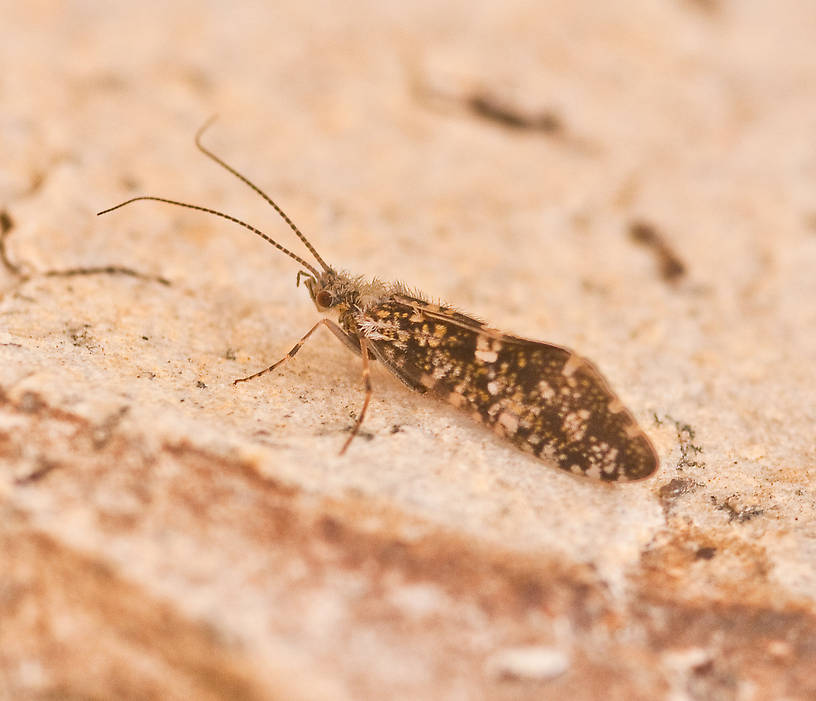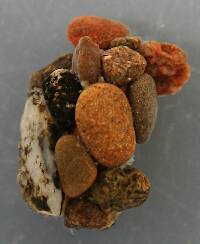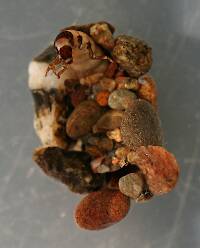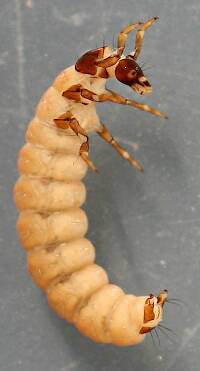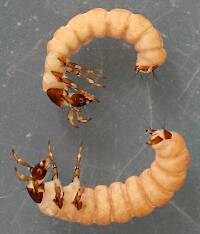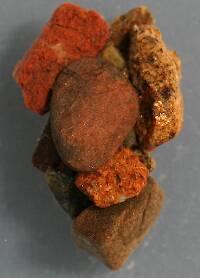
Salmonflies
Pteronarcys californica
The giant Salmonflies of the Western mountains are legendary for their proclivity to elicit consistent dry-fly action and ferocious strikes.
Featured on the forum

Troutnut is a project started in 2003 by salmonid ecologist Jason "Troutnut" Neuswanger to help anglers and
fly tyers unabashedly embrace the entomological side of the sport. Learn more about Troutnut or
support the project for an enhanced experience here.
This topic is about the Caddisfly Genus Glossosoma
The sporadic emergence of these caddisflies diminishes the importance of the freshly emerged adults and pupae, but they have unique periods of vulnerability as larvae during the day and again as diving egg layers at dusk that can make them very important. A taxon can only have one common name attached in the title but this is one of those genera whose species come in a variety of colors and descriptive common names. In the West their bodies generally come in tan to brown shades with matching wings, their wings can be speckled grayish tan or even almost black as with an eastern species. Some western rivers have astounding populations. See Glossosomatidae for more information.Example specimens
LittleJ on Apr 19, 2008April 19th, 2008, 4:03 pm EDT
I was thinking very dark olive w/a ginger shuck. Sound right to any of you?
thanks
jeff
thanks
jeff
Quillgordon on Apr 20, 2008April 20th, 2008, 1:29 am EDT
LittleJ,
LaFontaine says its Tan and Pale green.
@ Patterns: Deep Sparkle pupa, Emergent Sparkle Pupa
Jason,
Not sure why you have this labeled 'little Black Caddis' ?
LaFontaine says its Tan and Pale green.
@ Patterns: Deep Sparkle pupa, Emergent Sparkle Pupa
Jason,
Not sure why you have this labeled 'little Black Caddis' ?
Flyfishing is a state of mind! .............. Q.g.
C/R........barbless
C/R........barbless
Taxon on Apr 20, 2008April 20th, 2008, 6:50 am EDT
The wing color of Glossosoma varies by species. The wings of some (like G. nigrior) appear blackish, whereas the wing color of some other species may appear tan or brown. And of course, this doesn't even address the body color, which is arguably more obvious to trout. I believe this is simply another instance of the confusion introduced by use of common names to refer to aquatic insects.
LittleJ on Apr 20, 2008April 20th, 2008, 3:28 pm EDT
do you think glossosoma is what I'm seeing this time of year or do you suspect it is another species.
Taxon on Apr 20, 2008April 20th, 2008, 3:42 pm EDT
Jeff-
Unless I've missed something, which isn't all that unusual, you haven't provided a physical description of what you are seeing. If you do so, I'd be happy to offer an opinion. At the very least, I would need an approximation of length or hook size, and wing color. Of course, anything else you provide would help narrow it down.
Unless I've missed something, which isn't all that unusual, you haven't provided a physical description of what you are seeing. If you do so, I'd be happy to offer an opinion. At the very least, I would need an approximation of length or hook size, and wing color. Of course, anything else you provide would help narrow it down.
LittleJ on Apr 20, 2008April 20th, 2008, 4:02 pm EDT
rodger,
sorry for lack of information, the flys were size 16-18 (hook size) and look very similar to the grannoms. I was thinking that they have a very dark olive body as adults. In fact I would think that they were grannoms at a glance were it not for the fact that I saw some schucks that were ginger in color that got stuck to my net. That kind of made me look around and I noticed some smaller sizes close to the water. I had always just called them little black caddis. If any of you bug guys would like i'd be more than happy to try and collect some bugs when i'm on the stream and send them your way for an I.D. IF your interested in seeing some central pa bugs up close.
jeff
p.s the wings on the bug in question were dark.
sorry for lack of information, the flys were size 16-18 (hook size) and look very similar to the grannoms. I was thinking that they have a very dark olive body as adults. In fact I would think that they were grannoms at a glance were it not for the fact that I saw some schucks that were ginger in color that got stuck to my net. That kind of made me look around and I noticed some smaller sizes close to the water. I had always just called them little black caddis. If any of you bug guys would like i'd be more than happy to try and collect some bugs when i'm on the stream and send them your way for an I.D. IF your interested in seeing some central pa bugs up close.
jeff
p.s the wings on the bug in question were dark.
Taxon on Apr 20, 2008April 20th, 2008, 7:58 pm EDT
Jeff-
Given an early emergence (mid-Apr), a size of #18, an olive body, darkish wings, and their presence in PA, my guess would be Cheumatopsyche harwoodi, also called Little Sister Sedge.
Given an early emergence (mid-Apr), a size of #18, an olive body, darkish wings, and their presence in PA, my guess would be Cheumatopsyche harwoodi, also called Little Sister Sedge.
LittleJ on Apr 22, 2008April 22nd, 2008, 6:15 am EDT
thanks rodger!
jeff
jeff
Quick Reply
Related Discussions
Topic
Replies
Last Reply
Re: Identification of a possible Cordulegaster Dragonfly Nymph
In Cordulegaster Dragonfly Nymph by IanB
In Cordulegaster Dragonfly Nymph by IanB
6
Feb 10, 2017
by Taxon
by Taxon





